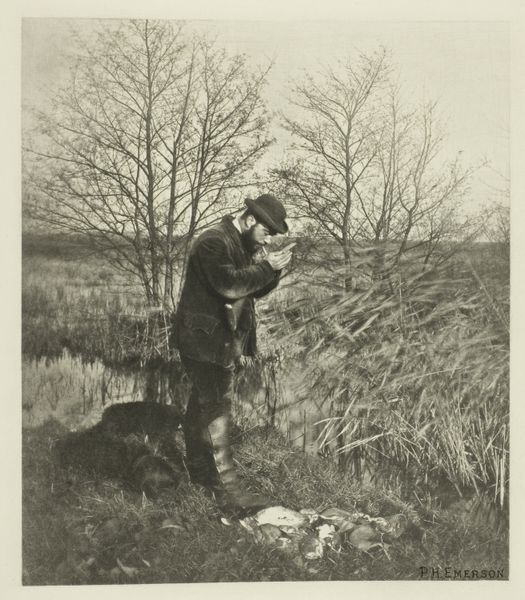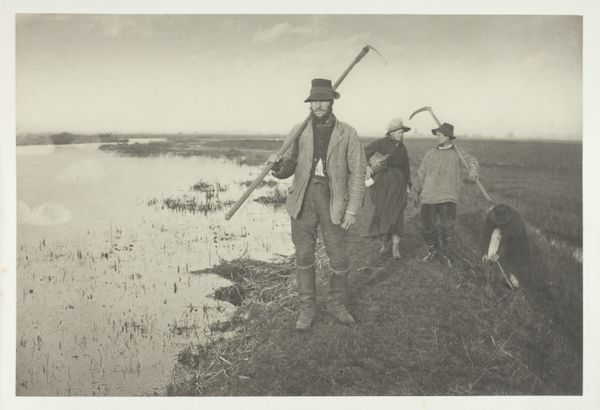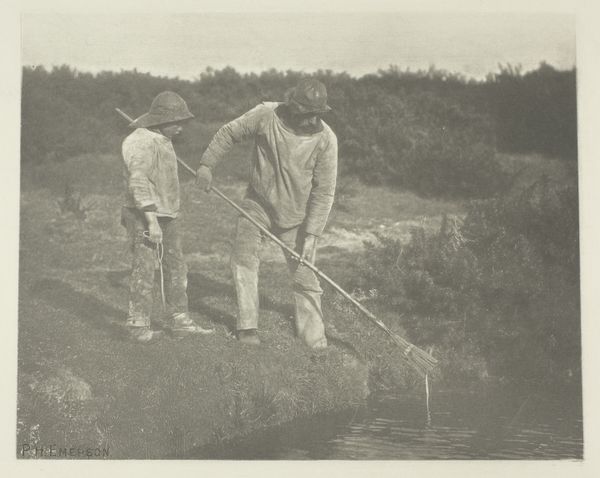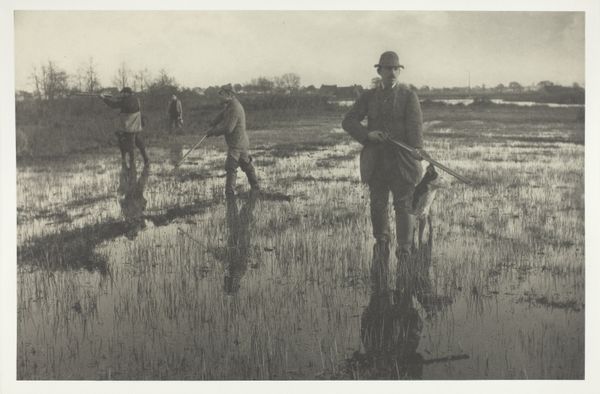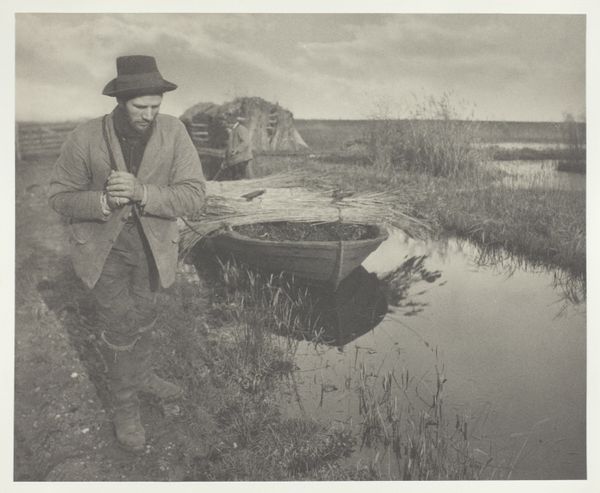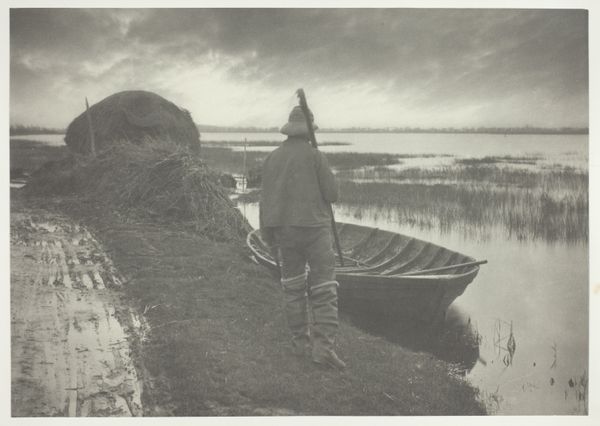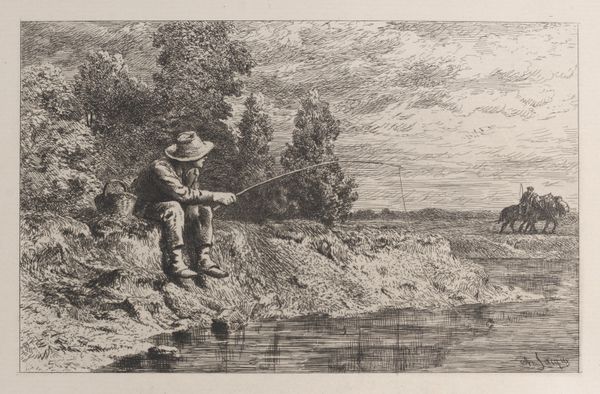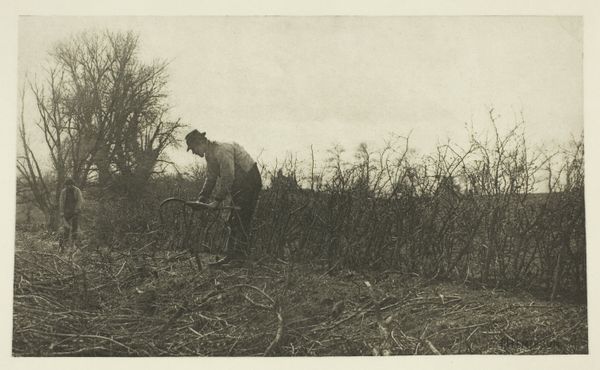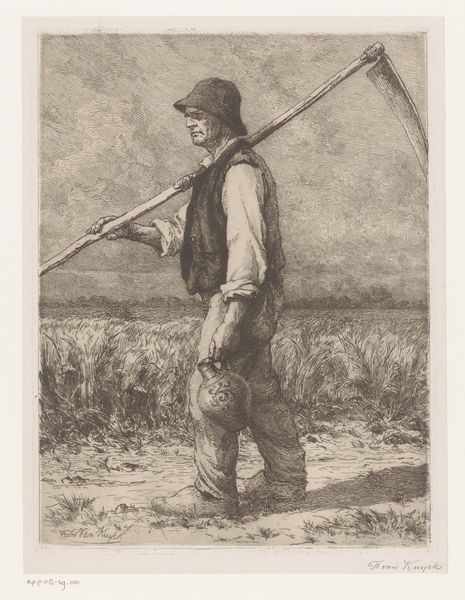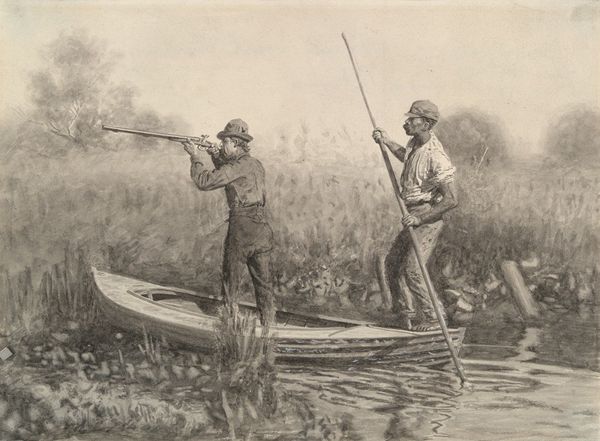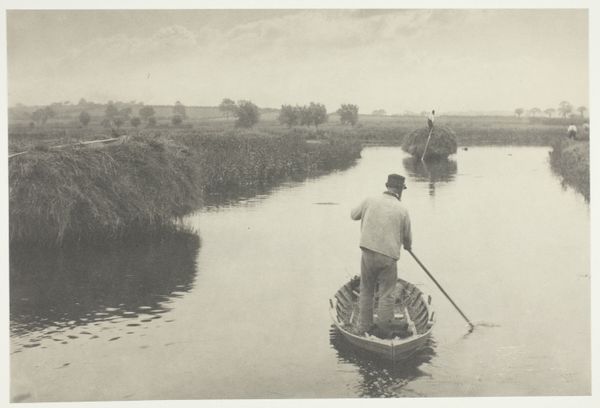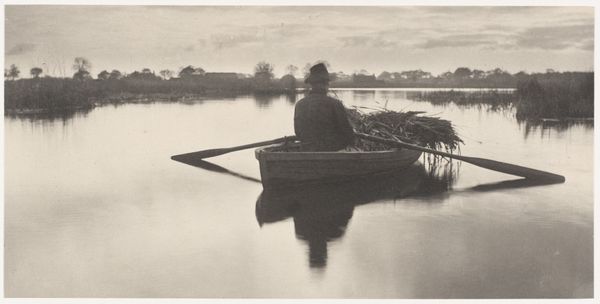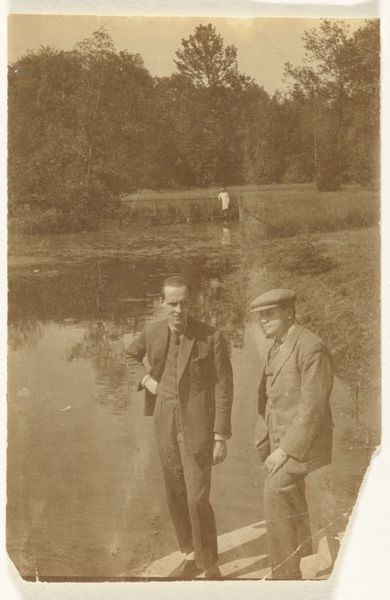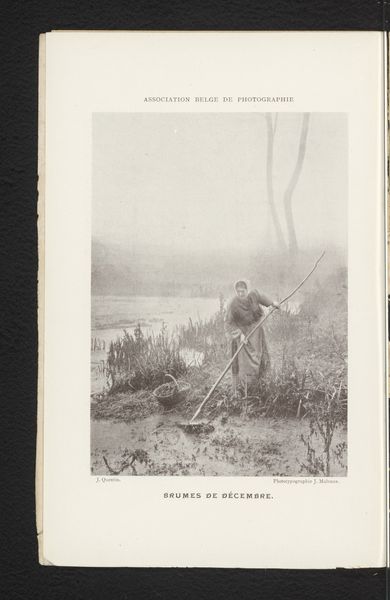
print, photography
#
still-life-photography
#
natural shape and form
#
16_19th-century
# print
#
landscape
#
photography
#
genre-painting
#
naturalism
#
realism
Dimensions: 28.3 × 20.7 cm (image/paper); 41.1 × 28.6 cm (album page)
Copyright: Public Domain
Curator: Let's turn our attention to "A Reed-Cutter at Work," a print made with photography, by Peter Henry Emerson, dating back to 1886. It is a really fascinating example of Naturalism. Editor: My first thought? Serenity, yet tinged with the starkness of hard labor. The man’s waist-deep in water, and those reeds look like they're closing in, nature both bountiful and a little…imposing? It's lovely. Curator: It’s a compelling depiction of rural life. Emerson championed what he termed "naturalistic photography," opposing artificial studio settings. This image is from his series documenting life in the Norfolk Broads. He wanted to capture life exactly as he saw it. Editor: It's that truth that gets me. You sense the chill in the air, the dampness of the water. And look at his posture! All in a split second he turns work into a melancholic study of the human condition. Also I see something that makes me want to scream -leeches!!! Curator: Well, it was very much influenced by the social theories of the late 19th century. Emerson viewed these rural communities as untouched by industrial modernity and wished to depict their harmony with the natural landscape as the truth. However, as his career went on his theories did face controversy. Editor: That makes me question what Emerson was really showing. Was it truth, or an ideal he projected onto that reed-cutter? Is there any ideal at all, it looks really unpleasant being out there. The composition and tones makes me remember some painters such as Millet and Courbet. What strikes me the most about this shot are the sharp verticals and reflections over the water... beautiful. Curator: Well it is worth knowing that his commitment was not without its problems. Many of the people he photographed, he idealized, rather than representing accurately, for the society to have a patronizing, romanticizing view on them. The perspective might well be, questionable, for someone today. But Emerson's work still stands as an important record and artistic attempt of that era. Editor: Hmm. It's complex, isn't it? This one picture, holding nature, labour, and how we interpret them all. Definitely giving me something to ponder. Curator: Indeed, a thought-provoking intersection of art, intention, and societal views, beautifully composed.
Comments
No comments
Be the first to comment and join the conversation on the ultimate creative platform.
